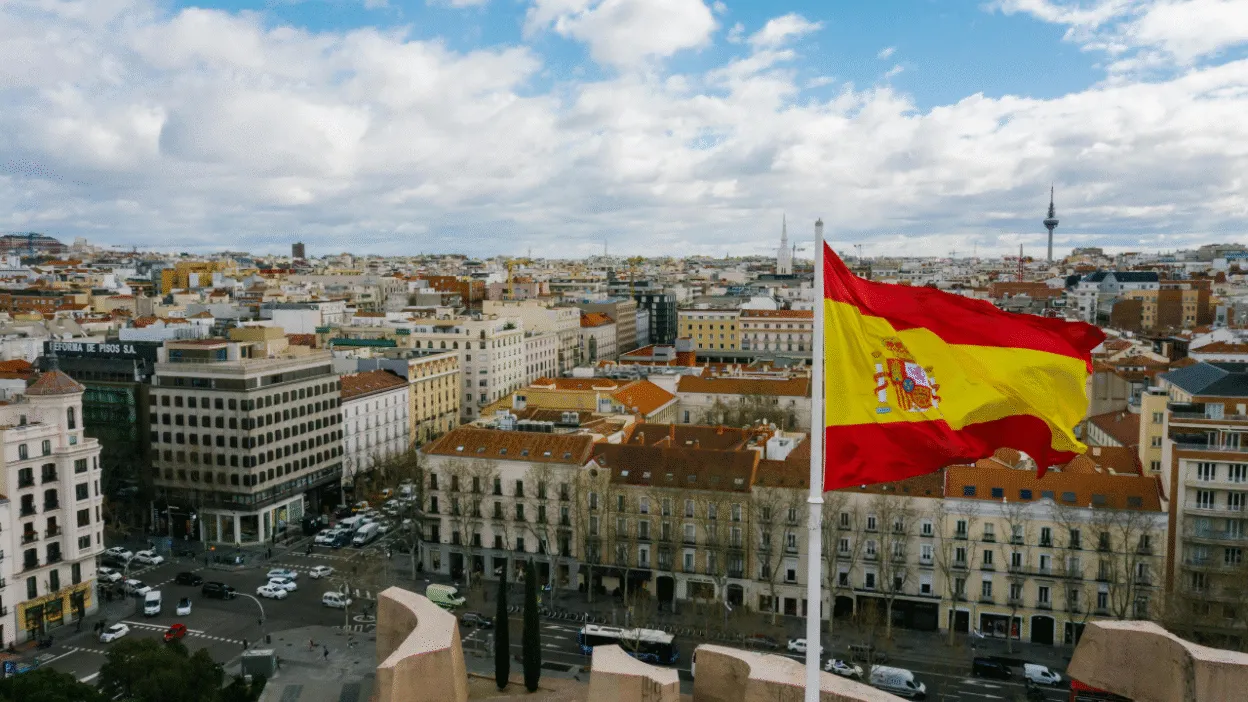Last Updated on August 7, 2025 by Mustafa Riaz
Key Takeaways
- Flags reflect Spain’s historical evolution across eras and ideologies.
- The national flag symbolizes unity, pride, and royal heritage.
- The coat of arms represents Spain’s historic kingdoms and unity.
- Regional flags highlight the country’s cultural and political diversity.
- Flags remain vital in expressing identity in modern democratic Spain.
Spain’s flags symbolize the nation’s rich history, regional identities, and strong sense of unity; they are more than just a collection of colors and shapes.
Over the course of its varied history, Spain has adopted a number of flags, each of which has come to symbolize various eras, ideologies, and even political changes.
Spain’s flags have great cultural and historical significance, ranging from the current national flag to the numerous regional banners.
1. Spain’s flag
The current national flag (also called the “Rojigualda”) is the flag of Spain that is most commonly recognised. It has three horizontal stripes: a yellow band in the centre, and a red top and bottom. The Spanish coat of arms is displayed on the left side of the yellow band, which is twice as tall as the red stripes.
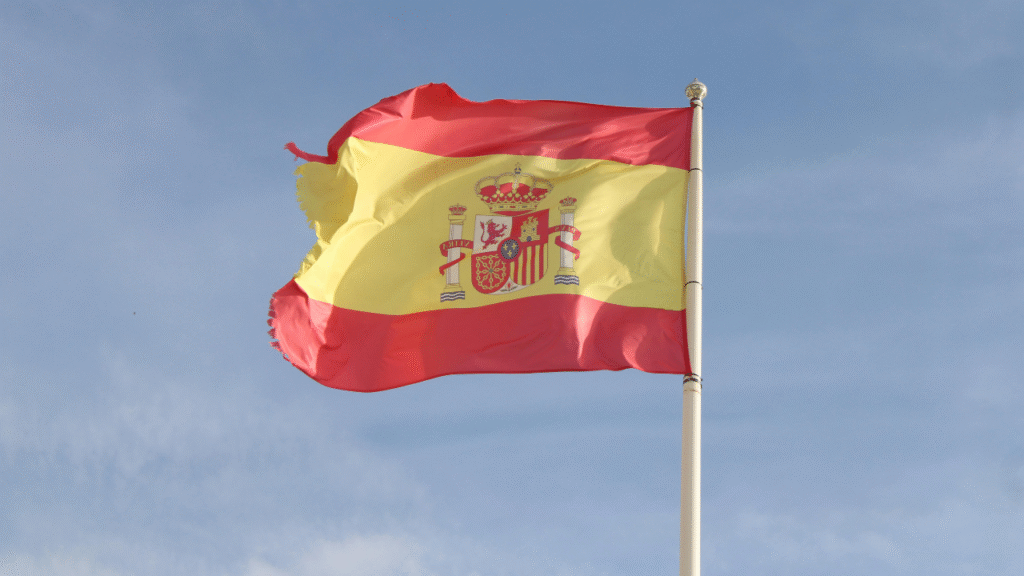
Spain’s royal past and national heritage are symbolized by the colors red and yellow. The yellow represents Spain’s wealth and land, while the red is believed to represent the blood of the Spanish people. Although the flag’s origins date back to the late 18th century, during the reign of King Charles III, it was formally adopted in 1981.
2. The Spanish Coat of Arms
The coat of arms is a significant component of the Spanish flag. Each of the four quadrants on the shield that makes up the coat of arms represents a different Spanish kingdom in history:
A castle is used to symbolise the Kingdom of Castile.
The Kingdom of León : A lion is used to symbolise it.
The Kingdom of Navarre: shown by a chain, and The Kingdom of Aragon: Shown by
four red bars on a golden background.
The shield’s central band features the Pillars of Hercules, which stand in for the Straits of Gibraltar, a geographical and historical representation of Spain’s dominance over the Mediterranean, and a crow, which represents the monarchy.
3. Regional Flags
Spain’s Flags serves as a representation of the entire nation, various regions within the country have their own flags, each with its own distinct symbolism and history. The various cultures, languages, and identities that exist within Spain’s regional borders are represented by these flags. Let’s examine a few of the most well-known regional flags:

3.1. The Catalan Flag
One of Spain’s most well-known regional flags, the flag of Catalonia is well-known both domestically and abroad. It is called the “Senyera” and has a golden background with four horizontal red stripes. The 12th-century flag represents the Kingdom of Aragon, which included Catalonia. The Counts of Barcelona’s ancient arms, a significant historical emblem in Catalan heritage, are represented by the stripes.
The Estelada is a variation of the Senyera flag that features a blue triangle with a white star in addition to the traditional Senyera. Catalan pro-independence organisations use the Estelada as a symbol of their aspirations for a Catalan republic.
3.2. The Galician Flag
A blue diagonal band separates the two halves of the Galician flag, which are blue at the bottom and white at the top. With the blue symbolising the Atlantic Ocean and the land’s connection to the sea, this flag has strong Celtic roots in Galicia. The flag, which symbolizes Galicia‘s cultural identity, was formally adopted in 1984, but its origins are even older.
3.3. Euskadi, the Basque Spain’s flags:
Three horizontal stripes—green at the top, white in the centcenterd red at the bottom—define the eye-catching Basque flag, also called the “Ikurrina”. The flag is divided into four sections by a white cross in the middle. The 1894 creation of the Ikurrina symbolises the distinctive language, customs, and cultural identity of the Basques. Red represents the Basque people, white represents their unity, and green represents the forests and countryside. These hues represent the Basque landscape.
3.4. Andalusia’s Flag
Three horizontal stripes make up the Andalusian flag: a white stripe in the centre, and green stripes on the top and bottom. This flag represents the area’s cultural and historical connections to Andalusia’s Islamic and Christian eras. Traditionally, white stands for harmony and peace, while green is connected to hope. This flag captures the diversity and legacy of Andalusia, a region rich in history.
4. The Background of Spain’s Flags
Spain’s flags have a long history that begins in the Middle Ages. In the past, Spain was split up into several kingdoms, each with its own flags and symbols. The unification of Spain in the 15th century, when Ferdinand and Isabella united the crowns of Castile and Aragon, laid the groundwork for modern Spain, was the most important development of the flag. The following centuries saw the continuation of this unification process, which shaped the flags we see today.
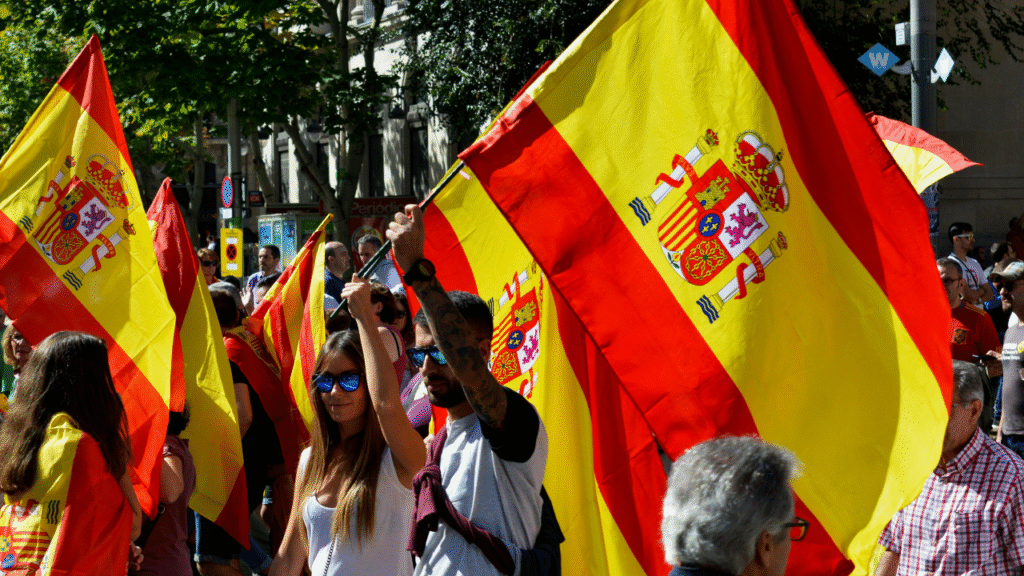
The red and yellow flag, which eventually became the current Spanish flag, was adopted by King Charles III in the late 1700s. The 19th-century adoption of the coat of arms and its ensuing modifications strengthened the country’s unifying emblem.
5. Flags’ Function in Contemporary Spain
Flags are strong representations of regional pride and national cohesion in modern-day Spain. While the regional flags highlight the uniqueness and autonomy of Spain’s numerous autonomous communities, the national flag of Spain symbolises the identity of all Spaniards. Given that regional autonomy has been a significant political issue during Spain’s democratic post-Franco era, these regional flags have gained particular significance.
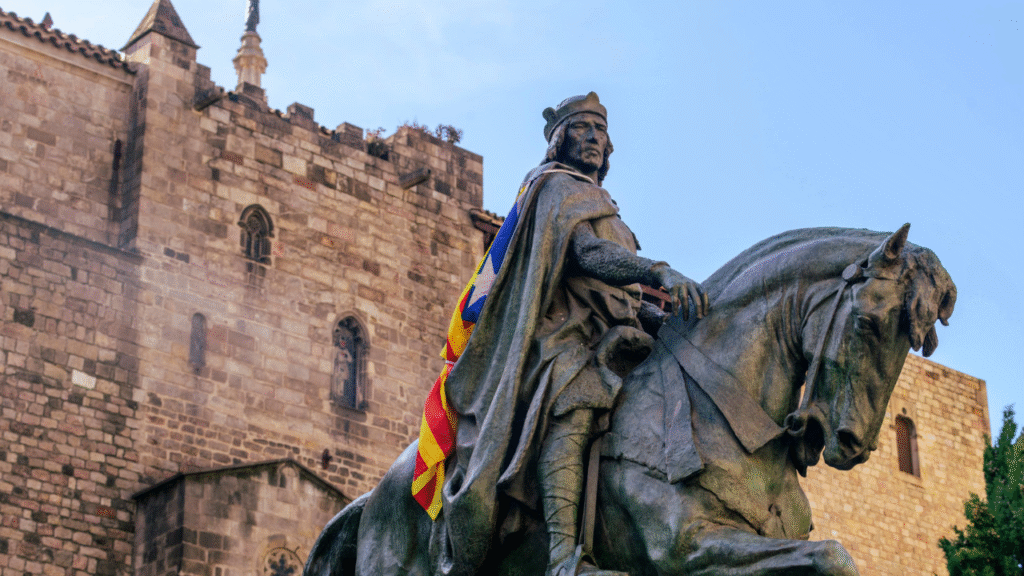
Both domestically and abroad, the flag of Spain is flown at official government buildings, military installations, and athletic events. Regional flags, which symbolise the continuous communication between Spain’s central government and its regions, are proudly flown in the corresponding regions during cultural events, protests, and celebrations.
6. Final Thoughts
Spain’s national and regional flags are more than just emblems; they are intricately linked to the nation’s identity, history, and culture. They stand for centuries of cultural development, political upheaval, and a dedication to regional diversity as well as unity. Every flag, whether it is the national flag, a regional banner, or the symbols it contains, tells a different tale and is an essential component of Spain’s history.
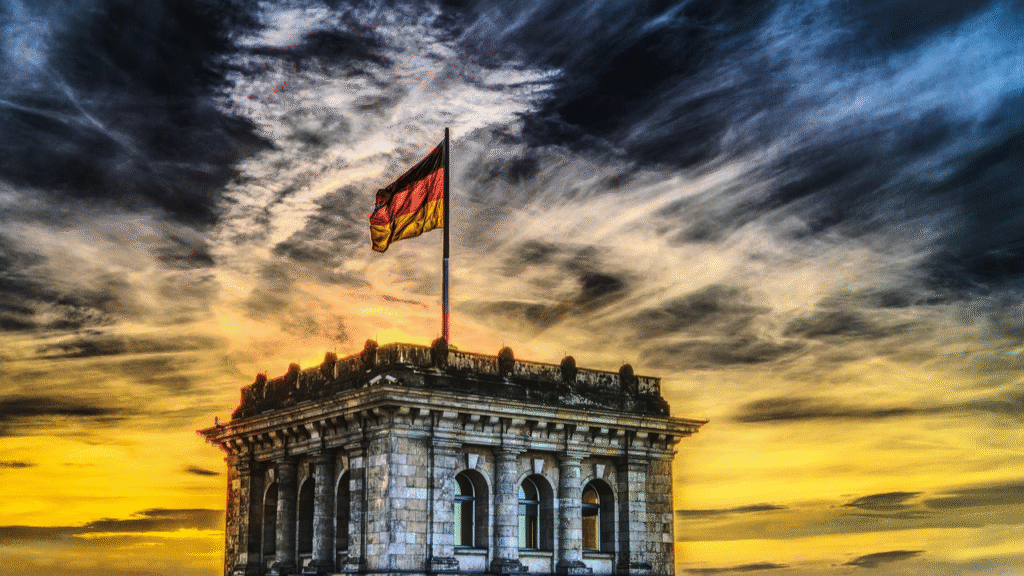
The flags serve as a reminder of Spain’s complicated past and the strength inherent in its diversity as the country continues to strike a balance between regional autonomy and national unity. Each flag adds to the greater fabric of Spanish identity in addition to representing its particular region.
Frequently Asked Questions About Spain’s Flags
What does the national flag of Spain represent?
The national flag of Spain, known as the “Rojigualda,” features three horizontal stripes—red, yellow, and red—with the yellow stripe being twice the height of the red ones. It also includes the Spanish coat of arms. The red symbolizes the blood and strength of the Spanish people, while the yellow represents the country’s wealth and land. This flag is a strong symbol of Spain’s national identity and unity.
What is the history behind Spain’s current flag?
Spain’s current flag design originated during the reign of King Charles III in the late 18th century. However, it was officially adopted in its present form in 1981 following the transition to democracy. The design reflects centuries of royal heritage and the consolidation of Spain as a unified nation.
What does the coat of arms on the Spanish flag symbolize?
The coat of arms on the flag contains deep historical meaning. Each quadrant represents a former kingdom of Spain:
- The castle represents Castile.
- The lion stands for León.
- The chains symbolize Navarre.
- The red bars on a gold background refer to Aragon.
Additionally, the Pillars of Hercules represent the Strait of Gibraltar, and the crown at the top signifies the monarchy.
Do Spanish regions have their own flags?
Yes, Spain is made up of multiple autonomous communities, each with its own regional flag. These flags reflect local history, culture, and identity, and are an important part of Spain’s diverse national character.
What is the significance of the Catalan flag?
The flag of Catalonia, known as the “Senyera,” consists of four red stripes on a golden background. It originates from the 12th century and represents the ancient Crown of Aragon. A variation called the “Estelada,” which includes a star and triangle, is used by Catalan independence movements.
What does the Galician flag represent?
The Galician flag features a blue diagonal stripe on a white background. The blue signifies the Atlantic Ocean, emphasizing Galicia’s coastal geography and maritime tradition. The design reflects the region’s cultural identity and Celtic roots.
What does the Basque flag symbolize?
The Basque flag, known as the “Ikurrina,” includes a white cross over a green saltire on a red background. The red stands for the Basque people, white symbolizes unity, and green represents the land and forests of the Basque Country. It is a strong emblem of Basque cultural identity and autonomy.
What is the meaning of the Andalusian flag?
The Andalusian flag consists of three horizontal stripes—green, white, and green. Green represents hope and historical ties to Islamic culture, while white symbolizes peace and harmony. The flag embodies Andalusia’s rich multicultural heritage.
How have Spanish flags changed over time?
Spain’s flags have evolved from the individual banners of medieval kingdoms to the national and regional flags seen today. The unification of Spain under Ferdinand and Isabella in the 15th century marked the beginning of a shared identity, which was later reflected in the adoption of a national flag in the 18th century. Over time, various elements were added to represent unity and historical significance.
What role do flags play in Spain today?
In modern Spain, flags are powerful symbols of identity. The national flag is displayed at government buildings, public events, and international occasions to represent the country. Regional flags are used during cultural celebrations, protests, and local events to express pride and heritage. Together, they reflect the balance between national unity and regional autonomy.
Why are regional flags important in Spain’s political and cultural landscape?
Regional flags in Spain are more than decorative symbols—they express the unique identity, autonomy, and political voice of each region. Especially in the post-Franco democratic era, these flags have become vital in showcasing Spain’s pluralistic society and respect for regional diversity.
